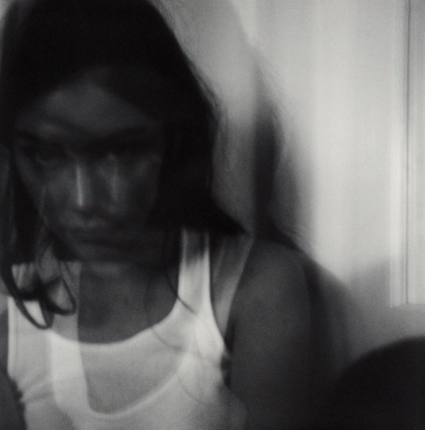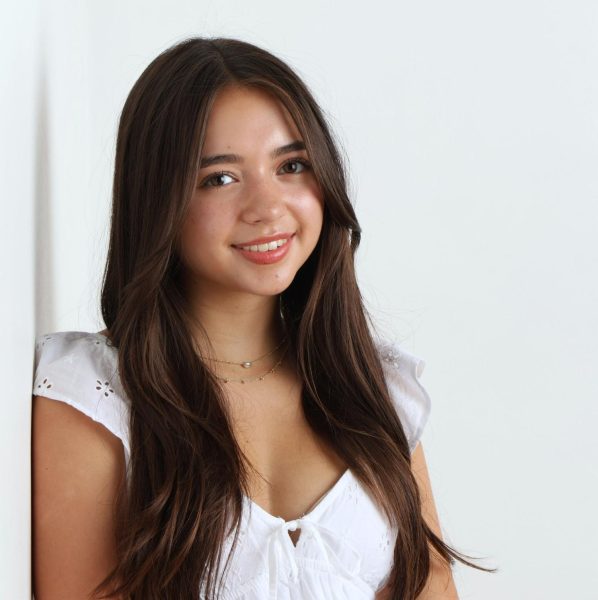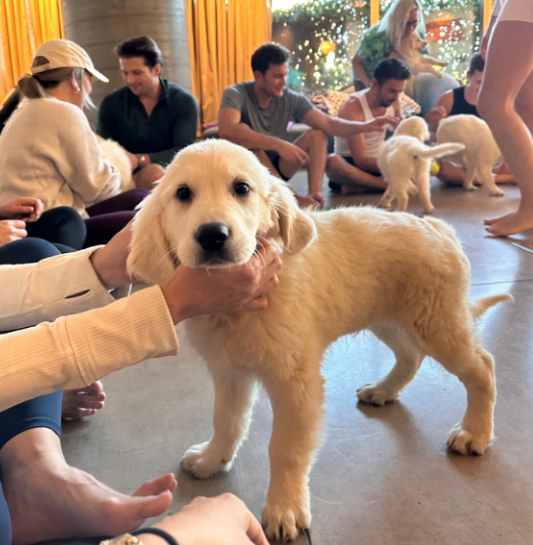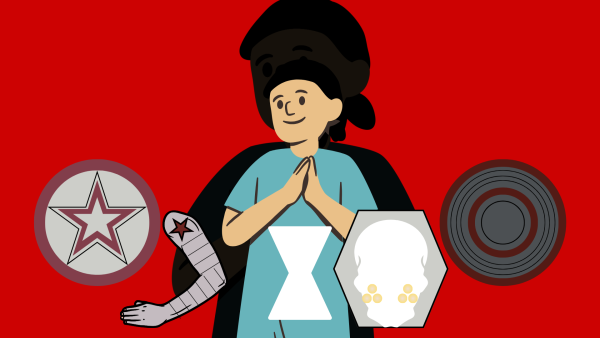Gracie Abrams will leave you in ‘The blue’ with debut album, ‘Good Riddance’

“Good Riddance” album cover
If you know anything about Taylor Swift’s influence on Gen Z artists, you are more than familiar with the names Olivia Rodrigo, Conan Gray, and Maisie Peters. Titled “Taylor’s children”, these singers are known for their passionate pop ballads, much like their “mother.” Swift has paved the way for a new generation of the heartbroken. These singers have taken TikTok and the radio by storm, gaining the interest of angsty, emotional teenagers, and putting a modern spin on Swift’s iconic brand of heartwrenching lyrics with unique melodies. But a new voice has entered the House of Swift: Gracie Abrams. Abrams’s debut album Good Riddance was released on Feb. 24. Good Riddance tells a cohesive story of a breakup with heavy lyrics, yet enlightening and dreamy production.
Abrams, who will be joining Swift as an opener on her highly anticipated Eras Tour next month, has released two EPs in the past two years, the six-track Minor, and the 12-track This Is What It Feels Like. An established “sad girl with a guitar”, Abrams has released hits like I Miss You I’m Sorry and 21, which have gone viral on TikTok for their narrative storytelling and relatable lyrics. Good Riddance doesn’t stray from this pattern, and if anything, is much more mature than her previous projects.
Abrams collaborated with one of the most talented producers and songwriters in the indie world right now, Aaron Dessner of The National. Dessner is known for his intricate guitar string melodies and his work with Taylor Swift on her records such as Folklore, Evermore, and Midnights: 3AM. He has also worked with Bon Iver. Dessner and Abrams make an amazing team, as their lyrical talent seamlessly blends to create passionate masterpieces.
A few days before Good Riddance came out, Abrams let her audience at her show know the “right” way to listen to the album the first time. “Can you [all] make me a promise?” Abrams asks on stage. “When it [Good Riddance] comes out, will you listen to it in headphones, from top to bottom in order?”
She was not misleading– listening to the album, headphones and in order is in fact, the best way to really experience the album for the first time. Good Riddance really is a headphones album. The whole record feels so personal, like a letter to someone, that needs to be shared through secrets, just you and your headphones in your bedroom. Dessner’s production will immerse you in a world of heartache, feeling just like you are Gracie writing the song.
Good Riddance tells the story of a major breakup with ex-boyfriend and collaborator Blake Slatkin (who has worked with notable artists such as Lizzo, The Kid Laroi, and Justin Bieber) whom she dated for six years. Good Riddance is not only about the complex feelings of growing apart, but growing up as well, reading like entries of a diary.
Abrams opens the album softly with the appropriately titled track Best. It really is the one of the best tracks on the record with it’s dreamy production and introspective lyrics. The song reflects on an old relationship where Abrams knows she was a big part of the problem. It’s so rare for an artist to sing about them being the problem in the relationship, and Abrams does so with a banger bridge that builds, saying, “Gave me the best of that, I was so negligent/Now, I feel terrible ’bout how I handled it/And now, I, now I bet you resent/All of me, all of it, angry, blocking me over the internet/Promise I don’t forget all of my fault in this.” One of Abrams’s strongest suits is her ability to write a bridge, and she really delivers on this track, like many other tracks’ bridges on the record.
On the second track, I know it won’t work, Abrams flexes her ability to write pop hits. With an upbeat chorus and devastating lyrics, Abrams yearns for a relationship to be fixed with the snap of her fingers, but she just know it’s not plausible with their history. The most interesting line in the song has to be “’Cause I’m your ghost right now, your house is haunted.” This line presumably serves as a parallel to Abrams’s song I Miss You I’m Sorry’s iconic lyric, “Nothing happened in the way I wanted/Every corner of this house is haunted.” Abrams implies growth in this lyric, like she once thought all of her memories were ruined by an ex, when in reality, she causes the same problem for him too. Abrams emphasizes this yearning in the track Full Machine, in which where she describes how she can’t function without her ex.
In tracks Will you cry? and This is what the drugs are for, Dessner’s guitar skills are especially highlighted. Dessner’s minimal approach to producing the album somehow manages to make the album sound so full, like the sound is all around you. The biggest difference between This is What It Feels Like and Good Riddance has to be the production– ex-producers of the EP produced stripped-back pop hits, Dessner produced stories. There is a clear difference between the work Abrams has done with other producers versus her work with Dessner.
The second-to-last track The Blue seemingly comes out of the blue with it’s angelic sounding chorus about finding love when not expecting it, in contrast to the themes of the rest of the record. Abrams’s vocals are strong yet delicate describing her weakness to this person, opposing the weakness she felt in I know it won’t work. The Blue is about finding that one person you finally feel like you can open up to but not expecting it. Multiple times throughout the album, Abrams will describe the color blue as a color of ache, like in Difficult singing, “Was it somethin’ that I said that colored you blue?” or in This is what the drugs are for, “I’m still waitin’ by the phone/You painted my life indigo, oh/A kind of blue I hate to know, oh/Where everything turns kinda cold.” But here, in The Blue, it saves her, suggesting that we learn the most from when we are hurting. She was never expecting that anything good could come from her blue.
Right now, the final (and probably the best) track on Good Riddance, sounds like daylight. A ballad that stands out from the rest, Abrams shares the journey of growing up and having to adjust to a new life, leaving behind family and old friends to pursue new dreams. Though it’s difficult and home-sickening, Abrams finally feels like herself in a new world, separated from the hurt of her old life. This song is so universal for anyone going through change during fundamental times in their life. Listening to Right now feels like butterflies in your stomach, the beach at sunrise, or driving home. There’s something familiar about the song, yet unknown. It’s simply the perfect, hopeful (yet somehow painful) way to end the story.
In Good Riddance, Abrams bids adieu to an old relationship, an old life, and old version of herself. Abrams is brutally honest with herself, which spotlights the beauty of the indie-folk genre, relatable, heart-filled lyrics. Her best work of all time, Abrams gave it her all in this truly reflective record.

Penelope is a senior, and this is her fourth year on North Star News. She's inspired by journalist icons like Carrie Bradshaw and Andie Anderson....






